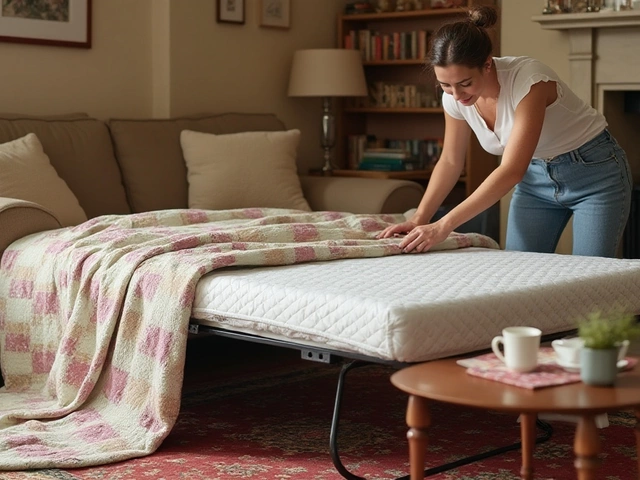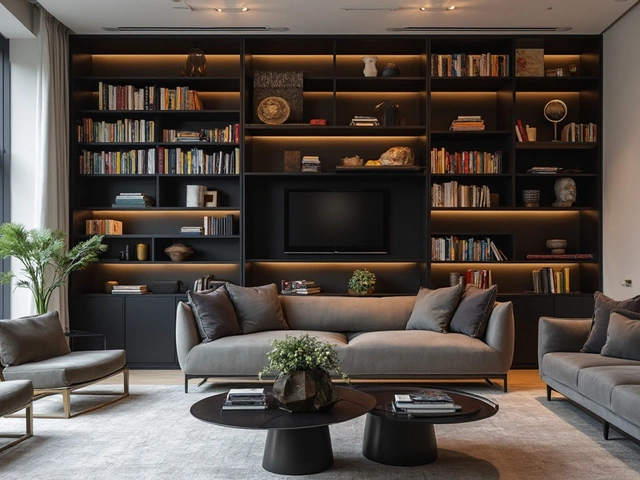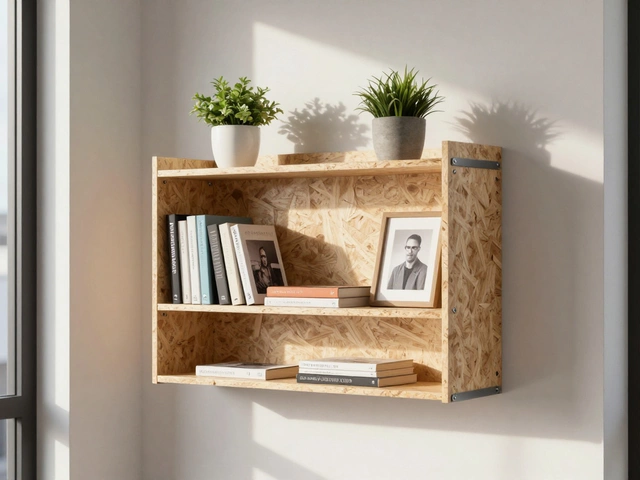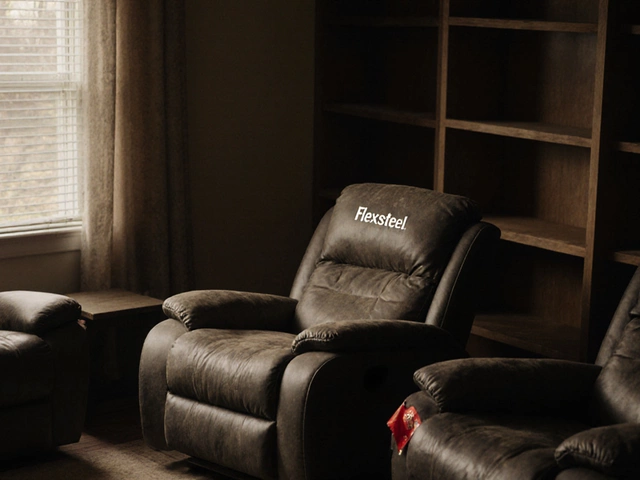Ever noticed how you can't sit still for long, even in a chair that claims it's the best in the market? If you have ADHD, it's not just about feeling restless—it's about constantly searching for the "right" position, or sometimes even standing up and pacing without realizing it. That chair you picked out because it looked ergonomic and stylish? It becomes just another challenge.
The dark side of ADHD lurks in places people rarely notice, like your office chair and the way you work. Losing focus, fidgeting, or even ending up with a sore back isn't just annoying—it adds up fast, leaving you drained, frustrated, and way behind on your to-do list.
Instead of blaming a "bad chair," it pays to look closer at how ADHD hijacks your sitting habits and your ability to stick with tasks. When your brain is wired for everything but stillness, even a plush cushion can't keep you comfortable for long. That means finding new tricks—simple adjustments, quick gear fixes, and routines—that make both your body and mind feel less trapped.
- ADHD and the Struggle to Sit Still
- Workspace Chaos: Distraction and Discomfort
- Why Office Chairs Make a Bigger Difference for ADHD
- Easy Fixes: Boost Focus and Comfort Fast
ADHD and the Struggle to Sit Still
If you’ve ever sat at your desk and caught yourself bouncing, wiggling, or nonstop tapping your foot, you’re not alone. Restlessness is one of the most frustrating parts for people with ADHD. Even adults who know they ‘should’ sit still just can’t help it—your brain keeps screaming for movement, and it’s exhausting. Recent studies say up to 90% of adults with ADHD fidget regularly at work, whether it’s shifting in their office chairs, drumming pens, or getting up every few minutes. This isn’t about lacking willpower. It’s built into how ADHD brains process dopamine, the “focus and reward” chemical. When dopamine runs low, your body tries to get it back up—often by moving, even when you don’t realize it.
What does that mean for your workday? For starters, it’s hard to sink into deep work if you’re always adjusting your position. Sitting still for just an hour can feel impossible. The urge to move goes beyond “just getting comfortable.” If you ignore the urge to fidget, you may become more anxious or even feel physical pain, especially in your back or legs. Everyday meetings or long calls can turn into a wrestling match between your body and your brain.
| ADHD Symptom | How it Shows Up at Your Desk | Impact on Your Work |
|---|---|---|
| Restlessness | Squirming, rocking, bouncing legs, chair spinning | Breaks focus, annoys coworkers |
| Impulsivity | Jumping out of seat, pacing room, sudden moves | Interrupts work, disrupts meetings |
| Poor Posture | Slouching, leaning forward or backward | Back and neck pain, discomfort |
If you think you’re just a “fidgety person,” look at the bigger picture. A chair can’t work miracles if your brain needs movement to function. Learn to spot your patterns—when do you start shifting more? Do certain tasks or times of day make it worse? Once you notice, you can start to use your restlessness to your advantage (instead of fighting it all day long).
- Try standing or moving during calls—it actually helps focus.
- Keep simple desk fidgets (think: stress ball or small object) handy for meetings that drag.
- Switch chairs or positions during the day, not just when you’re uncomfortable but as a brain break.
Getting restless is not a character flaw—it’s a clue. The sooner you accept it, the faster you can find workarounds that let you get back to what matters, even if that means wiggling your way through another Zoom call.
Workspace Chaos: Distraction and Discomfort
If you’re dealing with ADHD, sitting at your desk for longer than five minutes without fidgeting probably feels impossible. No matter how organized you try to be, clutter seems to take over—pens scattered, sticky notes everywhere, and random cords hanging off the edge. Research from the National Institute of Mental Health shows people with ADHD are much more likely to get distracted by visual noise or everyday office sounds, which means your productivity can plummet even when you want to focus.
It’s not just about distractions, though. Discomfort starts to creep in pretty quickly. You might shift around every few minutes, rock in your chair, or even grab another chair just to change things up. Weirdly enough, this restless behavior isn’t just annoying. It can lead to sore muscles, lower back pain, and tension headaches, making it even harder to stay focused or comfortable throughout the day.
Here’s the thing: a chaotic workspace and physical discomfort feed off each other. When you're distracted, you forget to adjust your chair, stretch, or sit properly. And once your body feels off, your brain gives up on work even faster. Office life with ADHD becomes a loop of discomfort and lost attention, so figuring out ways to manage it can make a huge difference.
- Try using simple storage tools—like boxes or desk caddies—to keep things less distracting.
- Set a phone timer to remind yourself every hour to stand, stretch, and check your posture.
- Noise-canceling headphones or calming playlists can help block out distracting sounds.
- If your chair feels uncomfortable, don’t just put up with it—try a seat cushion or a footrest for quick relief.
Small changes can turn chaos into control, making your office space way less overwhelming and a lot more productive—even on days your brain is bouncing all over the place.
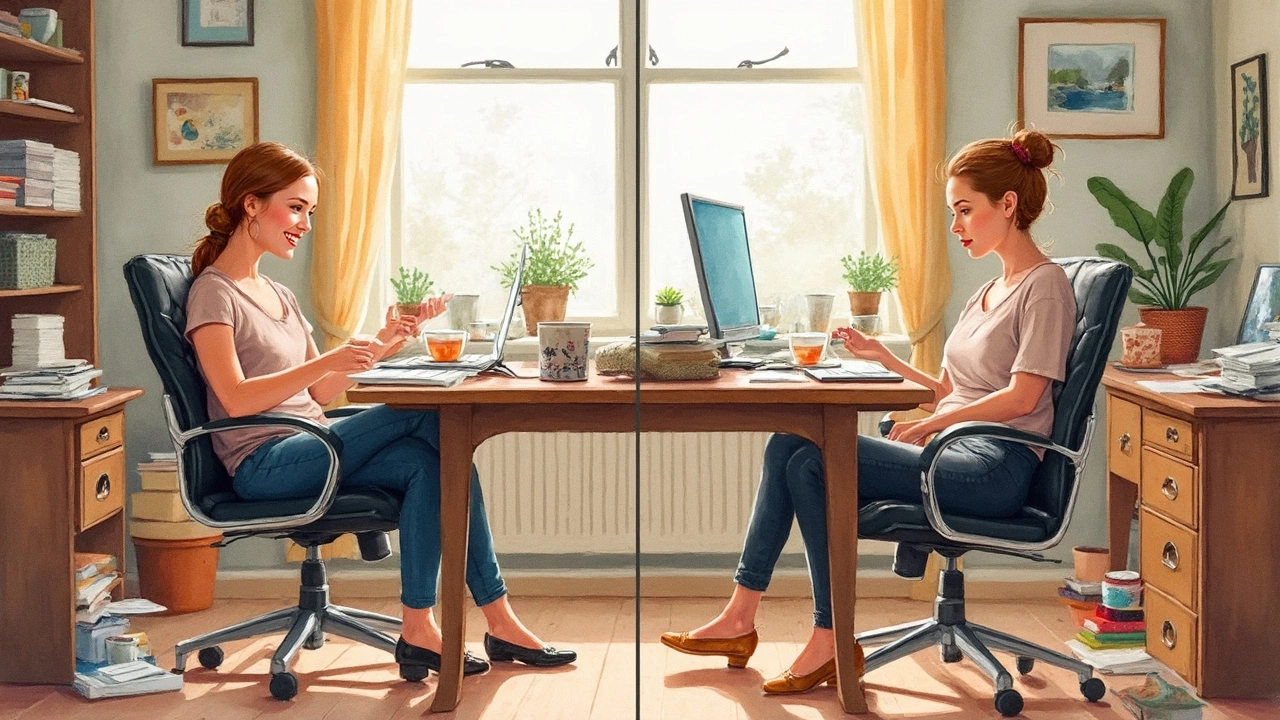
Why Office Chairs Make a Bigger Difference for ADHD
When you have ADHD, your chair isn't just a place to sit—it's actually part of your focus toolkit. Here’s the deal: if your seat is uncomfortable, awkward, or doesn’t let you move, your brain starts complaining right away. You get distracted, stand up, or start bouncing your leg—none of which helps you get work done. The right office chair can be the difference between a total fidget-fest and a productive workday.
People with ADHD usually crave movement. Research from 2020 found that adults with ADHD shift their posture almost three times more often per hour than folks without it. That means chairs that lock you in place, like stiff plastic models or ones with no tilt, end up working against you.
There’s also this: a bad chair ups the odds of soreness and fatigue, especially if you’re in the habit of working longer hours to catch up after getting sidetracked. You’re not just dealing with a restless mind. You’re dealing with aches that pile on more distraction and frustration.
So, what actually makes an office chair ADHD-friendly? Look for:
- Decent adjustability—seat height, tilt, and armrests should all move easily
- Good lumbar support (your lower back will thank you after fidgeting all day)
- Casters or a swivel base for quick, low-key movement
- Firm but not rock-hard seat padding (soft chairs can make you slouch, then you ache even more)
Check out this breakdown showing chair features and how people with and without ADHD respond to them, based on a 2022 survey of office workers:
| Chair Feature | % ADHD Respondents Who Said It Helped | % Non-ADHD Respondents Who Said It Helped |
|---|---|---|
| Height Adjust | 93% | 74% |
| Lumbar Support | 86% | 66% |
| Swivel Base/Casters | 90% | 55% |
| Recline/Tilt | 82% | 50% |
Bottom line: A ADHD-friendly chair isn’t just a nice extra—it’s one of your main defense tactics against distraction, discomfort, and lost productivity.
Easy Fixes: Boost Focus and Comfort Fast
So, how do you get stuff done when your brain and body are fighting against sitting still? Luckily, there are super practical ways to work with ADHD instead of against it—especially when you're stuck in an office chair for hours.
First off, don't force yourself to sit stiff like a statue. People with ADHD actually work better if they can move a little. Research from the University of Central Florida found that minor fidgeting—like tapping your feet, bouncing slightly, or even doodling—can actually boost productivity and help keep you focused on tasks.
- Pick the right chair: Look for chairs with adjustable height and tilt. Leaning back a bit or rocking can help burn off some energy. Some ADHD folks find kneeling chairs, balance balls, or active sitting stools even better for focus.
- Set a timer: Try the Pomodoro technique: Work for 25 minutes, then get up and move for 5. This keeps your brain fresh and gives your body a break. Studies show this technique helps people with ADHD stay on task longer and with less stress.
- Keep tools handy: Fidget toys, textured pens, or stress balls at your desk let you channel restless energy in a low-key way. Even a smooth stone or a piece of Velcro stuck to the underside of your desk can help.
- Change positions—on purpose: Switch from sitting to standing every hour if you can. A sit/stand desk makes a surprisingly big difference for folks who struggle to stay comfortable and alert.
- Declutter your workspace: The less visual noise, the easier it is to focus. Grab a bin and toss anything you don't use daily. Out of sight, out of mind helps your brain chill out.
Quick data check—here’s how much these tips can matter:
| Strategy | Improvement for ADHD (Average % Reported) |
|---|---|
| Pomodoro Technique | +40% focus |
| Fidget Devices | +30% decrease in restlessness |
| Chair Upgrades/Active Sitting | +25% decrease in aches & discomfort |
| Sit/Stand Desk | +35% improvement in staying alert |
It’s not about buying fancy gear or turning your desk into a playground. Small, thoughtful changes can flip your workday from scattered and sore to comfortable and surprisingly productive. Build your routine around your needs—not awkward old habits—and you'll actually want to sit down to work.

